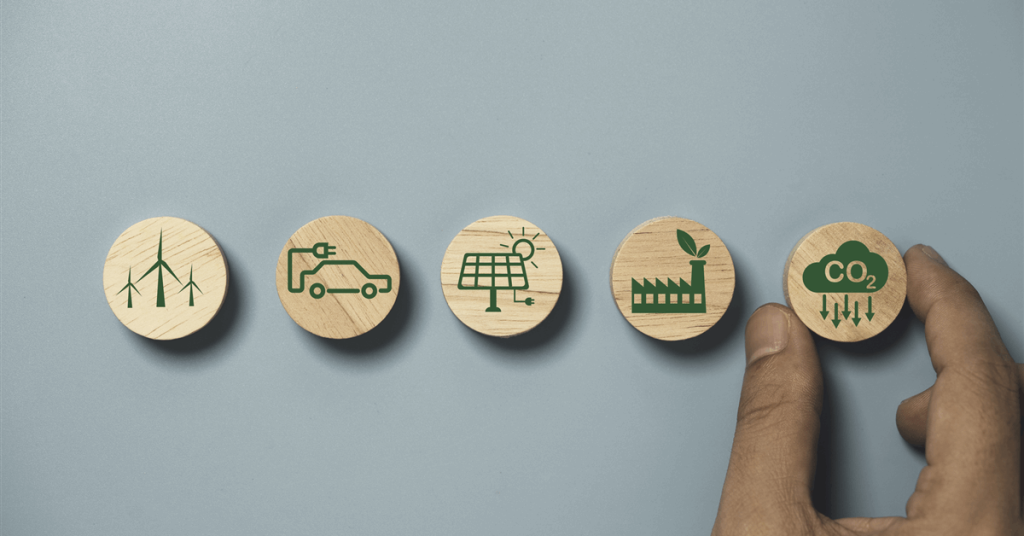INEOS Group and its partners on Wednesday named and launched what they call the first Europe-built carbon dioxide (CO2) carrier for capture and storage.
Adapted for handling CO2 under pressure and at low temperatures, Carbon Destroyer 1 was built at the Royal Niestern Sander shipyard in the Netherlands to serve the Denmark-based Project Greensand. The vessel used the EasyMax design developed by Dutch shipping majors Royal Wagenborg and Royal Niestern Sander.
The Project Greensand partners – diversified British company INEOS, London-based Harbour Energy PLC and Danish national oil and gas company Nordsøfonden – expect the ship and the other CCS components to become fully operational by the end of 2025 or early 2026. Project Greensand aims to store 400,000 metric tons a year of CO2, with plans to ramp up to as much as 8 million metric tons annually by 2030.
“The launch of Carbon Destroyer 1 is an important next step for Carbon Capture and Storage in Europe. We are demonstrating that Carbon Storage is commercially viable and a far better way to decarbonize Europe without its deindustrialization”, INEOS chair Jim Ratcliffe said in a joint statement by the Project Greensand partners and the shipbuilders.
Wagenborg chief executive Egbert Vuursteen said, “As the first European-built offshore CO2 carrier, this vessel positions us – and our partners – at the forefront of the energy transition in Europe”.
In Denmark’s Port of Esbjerg construction is underway on a new CO2 terminal that will serve as the onshore hub for receiving, storing and loading liquefied CO2 onto Carbon Destroyer 1. The terminal is designed to have six large storage tanks and infrastructure to support continuous and scalable CO2 transport to the offshore storage site.
Captured CO2, initially from Danish biogas plants, will be delivered to the terminal by truck, temporarily stored then transferred to the vessel. From the terminal, the vessel will sail to the INEOS-operated Nini field, where the CO2 will be injected over 1,800 meters (5,905.51 feet) under the seabed into depleted oil reservoirs.
Project Greensand is the first of its kind in the world to demonstrate that captured CO2 can be transported cross-border and stored offshore, according to INEOS. It had its demonstration March 2023, injecting CO2 transported from Belgium into the Nini field on Denmark’s side of the North Sea.
To contact the author, email jov.onsat@rigzone.com
What do you think? We’d love to hear from you, join the conversation on the
Rigzone Energy Network.
The Rigzone Energy Network is a new social experience created for you and all energy professionals to Speak Up about our industry, share knowledge, connect with peers and industry insiders and engage in a professional community that will empower your career in energy.
element
var scriptTag = document.createElement(‘script’);
scriptTag.src = url;
scriptTag.async = true;
scriptTag.onload = implementationCode;
scriptTag.onreadystatechange = implementationCode;
location.appendChild(scriptTag);
};
var div = document.getElementById(‘rigzonelogo’);
div.innerHTML += ” +
‘‘ +
”;
var initJobSearch = function () {
//console.log(“call back”);
}
var addMetaPixel = function () {
if (-1 > -1 || -1 > -1) {
/*Meta Pixel Code*/
!function(f,b,e,v,n,t,s)
{if(f.fbq)return;n=f.fbq=function(){n.callMethod?
n.callMethod.apply(n,arguments):n.queue.push(arguments)};
if(!f._fbq)f._fbq=n;n.push=n;n.loaded=!0;n.version=’2.0′;
n.queue=[];t=b.createElement(e);t.async=!0;
t.src=v;s=b.getElementsByTagName(e)[0];
s.parentNode.insertBefore(t,s)}(window, document,’script’,
‘https://connect.facebook.net/en_US/fbevents.js’);
fbq(‘init’, ‘1517407191885185’);
fbq(‘track’, ‘PageView’);
/*End Meta Pixel Code*/
} else if (0 > -1 && 88 > -1)
{
/*Meta Pixel Code*/
!function(f,b,e,v,n,t,s)
{if(f.fbq)return;n=f.fbq=function(){n.callMethod?
n.callMethod.apply(n,arguments):n.queue.push(arguments)};
if(!f._fbq)f._fbq=n;n.push=n;n.loaded=!0;n.version=’2.0′;
n.queue=[];t=b.createElement(e);t.async=!0;
t.src=v;s=b.getElementsByTagName(e)[0];
s.parentNode.insertBefore(t,s)}(window, document,’script’,
‘https://connect.facebook.net/en_US/fbevents.js’);
fbq(‘init’, ‘1517407191885185’);
fbq(‘track’, ‘PageView’);
/*End Meta Pixel Code*/
}
}
// function gtmFunctionForLayout()
// {
//loadJS(“https://www.googletagmanager.com/gtag/js?id=G-K6ZDLWV6VX”, initJobSearch, document.body);
//}
// window.onload = (e => {
// setTimeout(
// function () {
// document.addEventListener(“DOMContentLoaded”, function () {
// // Select all anchor elements with class ‘ui-tabs-anchor’
// const anchors = document.querySelectorAll(‘a .ui-tabs-anchor’);
// // Loop through each anchor and remove the role attribute if it is set to “presentation”
// anchors.forEach(anchor => {
// if (anchor.getAttribute(‘role’) === ‘presentation’) {
// anchor.removeAttribute(‘role’);
// }
// });
// });
// }
// , 200);
//});

